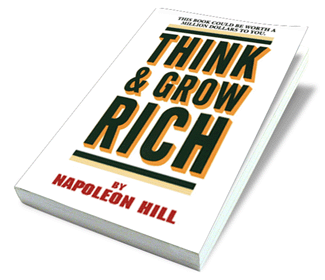 You may be wondering who invented the LifeVision and where it came from? The initial idea stemmed from Leo Weidner who was a student of Napoleon Hill, author of Think and Grow Rich. Dr. Hill was commissioned by Andrew Carnegie (in the ‘30’s) to conduct a study of America’s most successful men. In his book Achieving the Balance, Leo explains:
You may be wondering who invented the LifeVision and where it came from? The initial idea stemmed from Leo Weidner who was a student of Napoleon Hill, author of Think and Grow Rich. Dr. Hill was commissioned by Andrew Carnegie (in the ‘30’s) to conduct a study of America’s most successful men. In his book Achieving the Balance, Leo explains:
“For 20 years Dr. Hill interviewed, studied, and analyzed the 500 most successful men in the United States including: Henry Ford, Charles Schwab, Theodore Roosevelt, John Rockefeller, and Thomas Edison. One summer morning in 1996, while traveling south along the picturesque Oregon coast Napoleon Hill exclaimed, ‘Leo! Did you know that these wealthy and successful Americans had one quality in common?’ Before I could respond he continued, ‘I actually discovered seventeen basic principles of success in their lives but only one which almost all of them seemed to have.’ These seventeen principles were published by Dr. Hill in eight volumes named Laws of Success (1937), then revised in more detail in a four-volume set named Science of Personal Achievement (1964).
“I was as delighted as a young school boy and asked Dr. Hill to tell me the one principle that all of these successful men had in common. He explained that they had committed to paper the goals they wished to accomplish. It became their focus, passion, obsession…the primary vehicle that motivated them to success. Dr. Hill named this statement a person’s ‘Definite Major Purpose.’”
“During the rest of our journey, I was taught by this grandfather of success and motivation. Our Oregon coast ride ended too quickly, but that morning of instruction laid the foundation for my work. Since that memorable visit, I have devoted hundreds of hours in researching and experimenting with the power of the ‘Definite Major Purpose.’”
Leo Weidner consequently became the developer of the LifeBalance System. His research substantiated the importance of having a written statement, but he couldn’t find the step-by-step instructions on how to create and write it. After years of additional research and experimentation with the “Definite Major Purpose” he came up with a practical, easy-to understand, step –by step model which he called the “Creed.”
“Man’s actions are the picture book of his creed.” ~ Ralph Waldo Emerson
Although Leo Weidner was never my personal coach (like mentioned in my story, he was my dad’s life coach), I have worked with him on several occasions. Because my experience with the LifeVision was independent of Leo’s coaching, I had to be my own coach. Consequently, I developed my own unique style in creating my own LifeVisions and then went on to coach clients using my own methods. I have been coaching individuals on writing their own personal LifeVisions since the early ‘90’s and conducting workshops and seminars since 2000.
Together, Leo Weidner and his team of consultants and coaches at LifeBalance Institute, and I are trying to spread the word about the LifeVision and LifeCreed as unique and concrete ways of achieving goals and balance in life.
